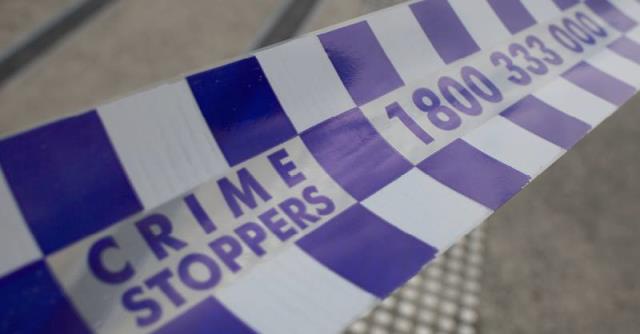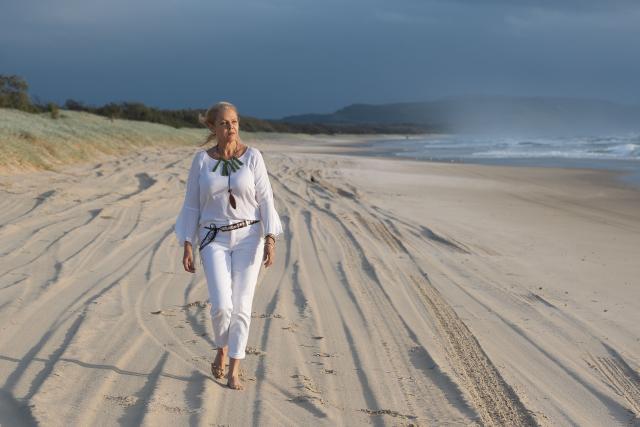
Noosa MP Sandy Bolton
Welcome to 2023 Noosa!
As I sit looking over the vast expanse of inland Australia, there is much to occupy my mind from our inbox.
Traffic congestion and the appalling behaviour of some visitors on New Year’s Eve, ongoing youth crime and the outpouring of grief and anger in response to the tragic death of a young mum in her own home at Northlakes during a home invasion.
This tragedy has reignited the reality that regardless of efforts by governments to reduce crime, it is very much part of our lives, and could occur anywhere, even here at home.
Understandably, the response from many is to lock them up and throw away the key. Emotionally I agree, however, having sat through public hearings in communities heavily impacted by youth recidivism such as Townsville, Mt Isa and Gold Coast, and read the enormous volume of submissions from frontliners, experts in crime reduction, and scientific papers, there is no simple solution, including throwing away the key, in what is such a multi-faceted issue.
Many initiatives employed to divert youth from reoffending are successful with 90 per cent of juveniles committing a crime not moving on to what is classified as a Serious Repeat Offender (SRO). According to the Atkinsons Report 30 September 2021 there were 341 youth offenders identified as SROs in QLD, with an over-representation of Aboriginal and Torres Strait Islander young people and concerning proportions of New Zealand, Pacific Island and African ethnicities.
Data shows that the proportion of young people offending on bail has increased from 47 per cent in 2019 to 53 per cent in 2021, and for the same period, the proportion of serious offending on bail increased from 14 per cent to 19 per cent.
The number and proportion of young people on bail who committed a further offence that led to serious harm or death, also increased from 60 (five per cent of all young people on bail) in 2019 to 78 (seven per cent of all young people on bail).
While there has been much discussion over the relevance of Covid impacts in these increases, I will discuss pre-Covid and our Legal Affairs and Safety Committee (LASC) investigations, including public hearings, where we learnt much on what was already a chronic situation in 2019.
Anecdotal evidence was presented that a high proportion of these youths show symptoms of Fetal Alcohol Syndrome, which in simple terms means that the damage done in utero to the brain leads to an inability to assess risk to themselves or others, as well as consequences. Currently this is not curable and the many neuroscientists, behavioral specialists and researchers working on this were unable to give our LASC an answer on how these individuals should be treated to prevent reoffending.
However, all agreed, including victims of their crimes attending hearings, that prison was not the answer due to the high potential for further criminalisation, leading to increased risk and danger to communities when they are released.
We also heard from witnesses, including police, where offenders would cry when not sent to juvenile detention. It shocked me to hear imprisonment is preferable for some to what they experience in their home life. We were told of households with drug and alcohol addicted parents or carers, overcrowded accommodations, domestic violence, and a lack of basics including food.
Offenders leaving detention share stories with younger siblings of activities, food, clothing and Christmas presents during incarceration, resulting in a culture that sees imprisonment as a preferable option that holds less fear, and greater care. How have we come to this in our country?
In everyday conversations it is agreed that real consequences are vital for those who commit crimes. It is also agreed that deterrence, education, early identification, and behavioural interventions are key to minimalising criminal behaviours in youth.
Queenslanders rightfully should feel safe in their homes, on our streets, and in workplaces. So, what is the answer?
We know that in a commonsense world, it makes no sense to punish adolescents through detention for non-violent crimes and then return them to the environment that fostered the criminality in the first place.
We also know that our prisons are overcrowded, with inquiries finding that when interred there are critical shortfalls in work programs and skills development, contributing again to the risk of further criminalisation on release. Government funded youth organisations, including counselling, are also often closed when their services are needed the most, such as weekends and evenings.
Disturbingly, witnesses relayed that targeted intervention for repeat offenders was not in any way early, with reports that it was only on the fourth or more court appearance that these commenced.
Rectifying these shortfalls is a start.
An additional option for the courts could also be introduced, and I have supported ‘relocation sentencing’ which has been put forward by the Katter Australia Party and Opposition MPs, based on our communities’ views in previous Noosa MP surveys showing over 70 per cent in favour of boot camps and over 60 per cent for options for youth detention.
This has not yet gained any support from government and is where young offenders are relocated to remote properties to work, develop life skills, respect and responsibility to others and self, away from where they can do harm. They would not be released back into the environment that fostered their criminality until they developed the capacity to reform or reject their previous influences.
A bonus is that while communities are kept safer, any wages could be saved towards buying their own cars instead of stealing them. Given that the Atkinson Report stated that it costs $1500 per day for imprisonment, it makes logical sense that taxpayer funds be utilised in a way that decriminalises versus criminalises.
It has been difficult to access statistics on what has been classified as a failure of a previous boot camp trial, however, there were reports from advocates `that participants did not reoffend at the rate of those who had been imprisoned in the first two years’, however, over a five-year period these statistics showed that there was no difference, hence why governments have not supported.
However, we discovered that the trial of boot camps had been hastily implemented with no follow-on monitoring, mentoring or supports to the individual or their families, which leads to questions regarding an adequate analysis of these options. Hence my asking in Statements of Reservation, speeches and of the Minister for an expansion of the pilot program, On Country, designed for Aboriginal and/or Torres Strait Islander youth, or similar, to provide an option to the courts for all minors committing nonviolent crimes, indigenous or otherwise. Youth sentencing has again been included in our current annual survey, and I encourage everyone to participate!
Given the increase in youth recidivism, for the 10 per cent of adolescents that reoffend, we know current efforts are not enough. With legislation coming before Parliament in February for greater deterrence, understandably we are all concerned that there appears to be little understanding of the particular youth cohort who are traumatising communities across QLD, many with impacted cognitive ability and others who prefer detention, who appear to not respond to harsher penalties.
With farms and cattle properties across the country in need of workers and who could take on these offenders as they have many years ago, this could be a sensible option that should be considered.
Locally, there is much we can do to create greater safety. Firstly, lock up! Your car, even when home, your house, and any other valuables. Stay alert for any suspicious behaviours, and report to our local police, whether during station opening hours or not, as there are always police on duty. For emergencies, dial 000, or for non urgent, use Policelink via their online forms or call 131444 and the information will be sent to local officers.
Additionally, Neighbourhood Watch provides a vital link between police and community, and with very few currently operating in our electorate, there is certainly room for more. If anyone would like to start a group in their own neighbourhood, have an initial discussion with Noosa Police Station or visit nhwq.org for further information and contact details.
Importantly, take the time to complete the annual Noosa MP survey, or even just the portion relating to issues such as youth recidivism and add in any further ideas in the ‘comments’ section. With resident feedback on this and other issues vitally important, we have extended the deadline to 30 January. You can find the online survey at sandybolton.com and please do not hesitate to call our office on 53193100 for assistance or to obtain a printed version if easier.
A reminder that community consultation is expected to commence in February on long awaited management changes to Cooloola Recreation Area, including the issue of visitor numbers, following over four years of advocacy. Please follow SandyBolton MP on Facebook to be alerted when this opens and for other important information including the outcomes from the current Noosa River consultation. For updates on many issues, check sandybolton.com/noosa360 by putting your topic into the search bar, and don’t forget to subscribe to our e-newsletter, especially those new to our community.
We look forward to updating further regarding measures to better manage youth crime and local policing matters as we work with our new Officer in Charge of Noosa Police Station, Anthony Cowan, and please make sure your New Year’s resolutions include keeping in the loop and participating in consultations.
Contrary to some opinions on social media, your views are essential, and very much considered in creating the future you seek!








